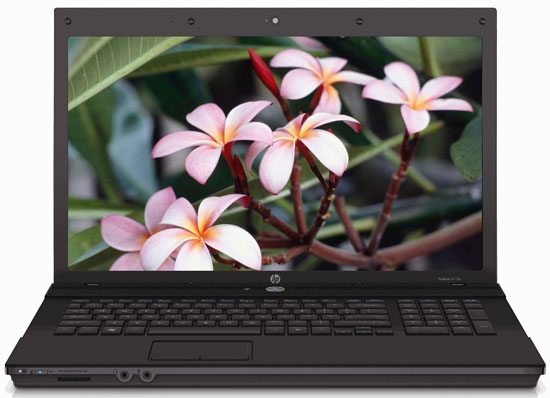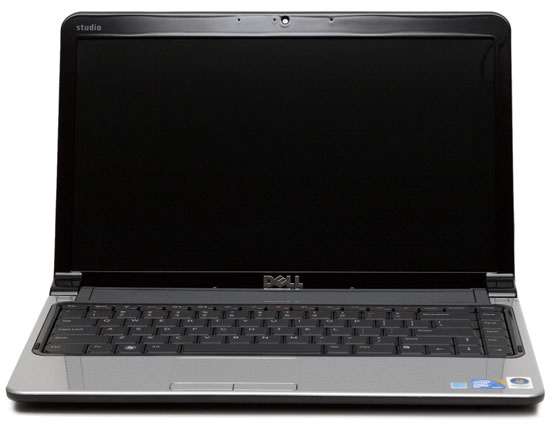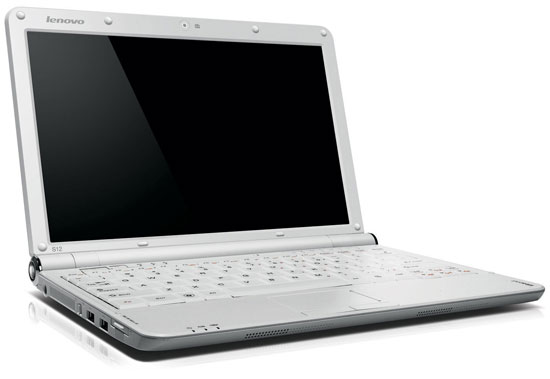Mobile Buyers' Guide, December 2009
by Jarred Walton on December 6, 2009 12:00 AM EST- Posted in
- Guides
AMD Laptops
Outside of sales - and there are many sales going on right now - laptops with AMD processors will mostly fall into this price bracket. The performance offered is good, though certainly there are faster laptops. One of the big selling points for AMD laptops is that they have good integrated graphics (ATI HD 3200) that can run many games, though usually only at low resolutions and detail settings. AMD-based laptops are really a question of priorities, and if you value performance and cost over battery life they are a very compelling option.
The latest AMD CPUs are now being built on a 45nm process and have architectures based off of K10 instead of the aging K8 design. All of these CPUs bear the Roman numeral "II" in their name, so look for the Turion II M500, Turion II Ultra M600, and Athlon II M300 CPUs. These CPUs should improve battery life and performance relative to older mobile Athlon/Turion designs, though it's unlikely they will be able to match Core 2 CPUs. Unfortunately, we're still trying to get a laptop for testing, so we can't provide a definitive answer at this time. We tried to find more information, but the best we could do is a note of "5 hours 15 minutes" with an HP dv7 at BestBuy - that's a 17.3" notebook with an 8-cell battery.
Ultimately, AMD-based laptops will typically cost around $100 less than Intel-based laptops with similar features, but they generally offer less battery life and performance. Given the features and performance available in the ASUS UL80Vt, we would recommend staying closer to the lower end of the price spectrum if you're looking at AMD laptops. The overclocked SU7300 CPU should offer close to the same performance as a ~2.0GHz AMD "II" CPU (i.e. the Athlon II M300/M320, slightly slower than the Turion II M500), and the G210M should offer about the same level of performance as the HD 3650/4570. You'd want a laptop with an HD 4650 or a GeForce G120M/G220M (9600M GT) and a Turion II Ultra (Pentium T4300) to surpass the UL80Vt performance, but there's still the topic of battery life.

The HP dv6z and dv7 are two of the few laptops that currently offer the latest AMD 45nm processors. With prices starting at $550 with the current $150 rebate - $630 with 4GB and a high capacity 6-cell battery - it's an interesting laptop but not our top recommendation. Depending on how much weight you place on battery life, graphics performance, and laptop size, you may disagree. In that case, have a look at the HP Pavilion dv6z (we're not sold on 17" laptops, so we'll pass on the dv7).
Intel Laptops
On the CPU side, Intel has had a clear lead over AMD since the launch of Core 2 several years back. In fact, on mobile solutions it would be difficult to suggest that AMD has ever enjoyed a lead over Intel. Ever since Banias in 2002, Pentium M and Centrino delivered what was arguably a better mobile solution for most users than anything AMD offered; Athlon 64 laptops in the Pentium 4 era were mostly of interest to the high performance crowd.
The CULV processors are great for battery life, but even the ASUS UL80Vt with its overclocked CPU doesn't offer nearly the performance available in other Core 2 mobile offerings. The Pentium T4300 (2.10GHz, 1MB cache) is very inexpensive and it should match most mobile AMD CPUs. Laptops start at around $500, but the GMA 4500MHD IGP is clearly inferior to ATI's HD 3200/4200. The P8400 and P8600 take clock speeds up to 2.26GHz and 2.40GHz, though you'll be hard-pressed to keep costs under $850 with such CPUs. If you want better gaming performance, look for a lower end Core 2 CPU with a discrete GPU or a better IGP like NVIDIA's 9400M.

Our favorite pick right now for Intel Core 2 laptops in this price bracket is the Dell Studio 14z. Maximum battery life is around six hours with the 8-cell battery, and the combination of Core 2 with the 9400M results in a good blend of performance. In gaming tests, the GeForce 9400M is around 50% faster than the ATI HD 3200, making it the current king of IGP solutions as far as performance is concerned. The base model Studio 14z comes with a Core 2 T6600 (2.2GHz, 2MB, 800FSB), 3GB DDR3, 250GB HDD, 1366x768 LCD, 56Wh battery, and Win7 Home Premium. $800 will get you the larger battery, and $850 will allow you to upgrade to the 1440x900 LCD - both upgrades are highly recommended.
Atom Laptops?
While there are plenty of Atom-based offerings in this price range, we feel Atom is a much better fit at the lower end of the price spectrum, and we would recommend against spending more than $400 (perhaps $450) for such a laptop. Regular Core 2 laptops are more than three times as fast (even for the low end CPUs), and CULV laptops are still twice as fast while offering similar battery life. Atom is really about keeping costs as low as possible at the expense of performance, and we can't recommend such laptops in the high price segments. As mentioned already, we also place the VIA Nano laptop (Samsung NC20) in this same category; priced at over $500, there are just too many other compelling options.

If you want a viable Atom netbook for around $500, we'd recommend the Lenovo S12 with 2GB. It's around $520, but we didn't like the HP Mini touchpad or keyboard enough that we'd spend the extra on the IdeaPad S12. About the only thing it can do without difficulty that CULV systems struggle with is 1080p Flash video, but that's at least something.










49 Comments
View All Comments
zicozz - Friday, December 11, 2009 - link
I'm looking for a smaller laptop and I'm currently aiming at either the Asus UV30 or the Asus F83. Can't seem to find any reviews of the F83, but the UV30 seems to be the king in this hill in it's class.zicozz - Friday, December 11, 2009 - link
Sorry UL30 not UV30JarredWalton - Friday, December 11, 2009 - link
The major difference between the UL80Vt and the UL30Vt is the screen size (13.3" for the UL30Vt) and the lack of an optical drive. It also weighs about 1 pound less. If you want something a bit smaller, go for it, but make sure you get the UL30Vt; there's an older UL30 that doesn't support Turbo33 and comes with a smaller battery I believe.jtsarnak - Tuesday, December 8, 2009 - link
I cannot recommend any Sony laptops, even the SR mentioned in this article for its good screen. I am the owner of a Z series and this laptop would have been near perfect except for one problem that is plauging most of Sony's line: Battery Drain.See here:
http://forum.notebookreview.com/showthread.php?t=4...">http://forum.notebookreview.com/showthread.php?t=4...
And here:
http://forum.notebookreview.com/showthread.php?t=2...">http://forum.notebookreview.com/showthread.php?t=2...
These are just two examples, there are a ton of threads out there discussing the problem. Sony's line has the unfortunate "feature" of draining the battery while the laptop is completely shut down. I say "feature" because numerous consumer attempts to get Sony to rectify the issue have been met with a canned response that this is typical for their laptops.
I have also emailed various websites and publications in an effort to get someone with a little more visibility and press to address the issue with Sony but to no avail. Sony continues to get good reviews on their machines but I'm doubting the reviewers ever bother to look for the drain during the review process.
Maybe Anandtech will take up the call. Sony is delivering a defective product (a mobile device that loses battery when it is shut off is, imho, defective) and claiming it as a "feature". Anandtech did a great job getting to the bottom of the SSD debacle with the JMicron drives, perhaps they can help us Sony owners as well. In the meantime, avoid these laptops if you don't plan on having it forever plugged in when you're not using it.
aznchum - Tuesday, December 8, 2009 - link
I'm an avid fan of IPS panels, and the only notebooks that I know carried them were the Flexview Panels on the IBM/Lenovo Thinkpads. If LCD quality is of a huge concern to you, you probably are better off picking up a Thinkpad x200 (non s) and retrofitting a BOE-Hydis HV121WX4-100 panel (12.1" 1280x800) in it. However, most of these panels floating around the market have a digitizer attached, since they're sourced from tablet PCs. So the mod is kind of a pain in the ass. I personally have modded a T60p with a QXGA screen and found it to be a relatively easy mod with the hardware maintenance manual. The 4:3 15" chassis of the T60/61 and R60/61 are probably the fastest notebooks you can buy that come with Flexview panels. If you're not snobby about LCDs, then go with the recommendations in this guide.CheesePoofs - Monday, December 7, 2009 - link
Thanks for the article, I've been looking forward to something like this!The UL30VT seems pretty interesting to me - same specs as the UL80VT but smaller package making the low-res screen a bit more bearable (I hope).
Also is there any word on when Arrandale laptops will come out? I've heard Jan 7th for Arrandale chips, but I have no sense of what the delay is between chip release and laptop availability.
btmedic04 - Monday, December 7, 2009 - link
I recently purchased a Sony Vaio VPPCW17FX at Best Buy for $799 (before tax) and I am absolutely thrilled with it (especially since i was coming from an ancient HP ZV6000 series with a desktop Athlon 64 3200 that weighed 7 lbs and looks like hell. served its purpose though, but i sure was surprised to see it survive a deployment to Iraq lol)Specs are as follows:
Intel Core2Duo T6600 2.2ghz 2MB L2 800mhz FSB
4GB DDR3 1066 (for some reason at DDR3 800mhz with no option to set 1066 in bios >.< )
500GB Hard Drive
Nvidia G210M with 256mb GDDR3 ram
Blue-Ray player
14" Monitor @ 1366x768
5.5 lbs
Windows 7 Home Premium 64bit
Not bad at all for the price I paid for it. It gets almost 3 hours of battery life with the Balance power plan in Windows 7. I also love the chic let style keyboard and theres no discernible flex in the chassis (as you can understand, im not about to try to fold my notebook in half long-ways LOL) It has 3 USB ports, a firewire 400 port, VGA port and HDMI. I havent tried any gaming on it yet, however I suspect with the lower resolution monitor, I should be able to play modern games with lower settings and older games with higher settings (much better than the integrated ATI Xpress 200m in my old laptop) I have hooked this laptop up to my 32" LCD TV and watched blue-ray movies at 720p with out any issues. Also, Sony released updated drivers for the G210M the day Nvidia did (I dont want to risk the nvidia release drivers as my friend totally destroyed all gaming capabilities on his laptop equiped with a Go7900GS. needless to say Toshiba sucks when it comes to driver updates) All in all, the VPCCW17FX is a great notebook at a great price
Roland00 - Monday, December 7, 2009 - link
No intel Celeron t3000 dual core love?It is the same chip as the intel pentium dual core t4200 except it runs at 1.8 ghz instead of 2.0 ghz and intel speedstep has been disabled (thus it won't get good battery life). Yet I seen this chip routinely in the 320 to 450 price range for laptops and it should blow away the competition in that price range.
http://ark.intel.com/Product.aspx?id=40738">http://ark.intel.com/Product.aspx?id=40738
JarredWalton - Monday, December 7, 2009 - link
Is it really that much cheaper than the Pentium T4200/T4300 laptops? I see prices of $430 (Toshiba Satellite L455-S5980) to $500+ (Lenovo ThinkPad SL410/SL510), and that's not even with a well-equipped laptop (i.e. 2GB of RAM, 160GB HDD). The Lenovo G550 is 3GB, 250GB HDD, and T4300 for http://www.provantage.com/lenovo-2958acu~7LENO1EE....">$495 or so. It's obviously not a huge jump from 1.8GHz 1MB to 2.1GHz 1MB, but SpeeStep is a pretty big omission IMO.Roland00 - Monday, December 7, 2009 - link
The pentium t4200/t4300 will be about 50 dollars more on average. For example without any sale go to the Toshiba website and you can get a T3000, 2gb memory, 160 gb hd and wifi n For $400, it costs 44 more for the pentium dual core.Now the whole point of the t3000 though is not to buy the laptop at the normal price, the same or similar laptop will go on sale. For example fry's has had a similar laptop to the toshiba but an msi 14 inch on sale a couple times for $319 (once) and $349 (twice). The msi also didn't use intel integrated graphics but instead the 8200m (half the speed of the ion but still 30 to 40% faster than the 4500m hd)
$319 is only 20 dollars more than those mythical $299 acers/hps that walmart was selling that was using the amd single core at 1.6 ghz (tf-20)